Brett Gamboa’s Brilliant Take on Doubling (and a lot of related stuff!) in Shakespeare
July 17, 2018 § Leave a Comment
This blog is concerned with the art of Shakespeare in performance, but the truth is that I review surprisingly few scholarly books here because it is frustratingly rare for one to perceptively address this issue. Now, however, there is a genuinely outstanding new book out that seems on its surface to be about a very narrow issue (doubling roles by actors in Shakespeare’s plays) and turns out to be about an entire range of performance issues that sneak in through that tiny crack. I recommend it without hesitation.
The book is Brett Gamboa’s Shakespeare’s Double Plays: Dramatic Economy on the Early Modern Stage. Professor Gamboa (of Dartmouth University) is the best kind of scholar-practitioner, and his book is essential reading for anyone seriously thinking about the plays in performance.
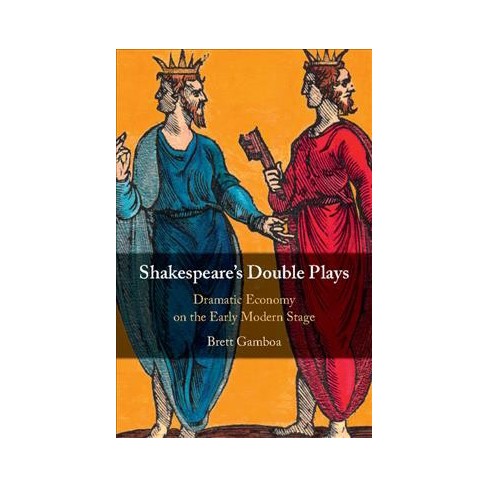
The cover of Gamboa’s new book
Gamboa’s book is a radical rethinking of the nature and significance of doubling (that is, an actor playing two or more characters in a production) in Shakespeare’s plays. His conclusions are startlingly original, and vastly different from the generally received ideas about how Shakespeare’s plays were performed in his own time and how they ought to be performed in ours.
Two Boards, a Dozen Actors and a Passion
Speaking with a practitioner’s voice, Gamboa flatly states that ALL of the plays in the canon can be performed by just 12 speaking actors, and are “more engaging, more pleasurable, sometimes even more credible” when they are. (Contrast this with, say, the New Oxford Shakespeare’s assertion that A Midsummer Night’s Dream, for example, requires a minimum of 12 adult males and an additional 10 apprentices/children because essentially no roles can be doubled in it, and you get a sense of how different Gamboa’s ideas are from even very recent scholarship on the subject.) He quickly disavows any ability to PROVE his thesis based on extant casting records or other historical evidence, but he is also quick to point out the myriad ways that the evidence does not support the generally accepted conclusions, either.
Gamboa, instead, argues very persuasively on aesthetic, dramaturgical, and practical grounds that the centrality of doubling to Shakespeare’s practice has never been properly explored, and its extent vastly underestimated. When combined with a critical reexamination of the historical evidence, he brings new insights into probable “original practice” and raises exciting possibilities for contemporary performance practice, training and production.
Along the way, he challenges a lot of standard narratives. He finds no reason to believe that Shakespeare and his fellow sharers, that is co-owners of the company, would refuse to play multiple parts in a production, however widespread the view has become in our time that the practice was confined to hired extras in small parts. He is equally dubious about the artistic and economic possibility of boy actors taking on major roles like Rosalind, Cleopatra and Volumnia after only a couple of years of training – or that there was a steady stream of apprentices (basically an entire stable of trainees) being maintained at all times to fill in for teenagers graduating to male roles as soon as their voices broke.
A much more likely scenario, given the evidence we have and our knowledge of the practical limitations on resources is that actors played females roles well into their twenties, that they sometimes doubled both male and female roles in a single production, and that these were highly skilled performances that depended on intentionally theatrical artifice rather than verisimilitude.
Beyond “Vulgar Necessity”
At the center of Gamboa’s argument, however, is not quibbling over whether theatre historians have overreached the evidence when putting forth their opinions. Instead, he focuses squarely on the compelling aesthetic patterns that emerge when doubling is not thought of as a “vulgar necessity” as one prominent scholar labeled it, but an integral practice for making meaning. His literary and theatrical insights are, well, thrilling.

Author Brett Gamboa
As but one example, he discusses how the Nurse’s otherwise inexplicable tirade on the death of Tybalt, in Romeo and Juliet, in which she calls him her best friend despite their having NO relationship in the play until that point, becomes meaningful in numerous new ways if we consider that the same actor might have played both parts. Among other things, it highlights the actor’s virtuosity to foreground the doubling, and provides another layer of pleasure to the audience when included in the “in-joke.”
If there only one or two such ideas in the book, it might feel like a stretch, but Gamboa is revelatory about every play in the canon, often highlighting numerous doubling possibilities that extend meaning through repetition or juxtaposition across multiple characters.
This is the most thoughtfully provocative book about Shakespeare’s practice I have read in years. It has enormous implications for how we train actors and directors, how we understand the dramaturgical structures of the plays, how we teach theatre history, and most of all, how we produce and perform the plays in our own time.
More Information:
Shakespeare’s Double Plays by Brett Gamboa
May 2018
Cambridge University Press
ISBN: 9781108417433
click ISBN for the Cambridge U website.
$99 from multiple retailers. E-book: $80
An Epic PERICLES at Marin Shakespeare
July 16, 2018 § Leave a Comment
Pericles is generally held to be minor Shakespeare. It was not included in the First Folio, has no reliable text, and was (according to almost all reputable scholars, who credit co-author George Wilkins) only partially written by the Bard. You never read it in school, and you only rarely get to see it. That is a pity, because – with some competent dramaturgy – it works wonderfully well in the theatre. Exhibit A is a delightfully emotional/entertaining production at Marin Shakespeare directed by Lesley Schisgall Currier and starring Dameion Brown in the title role.
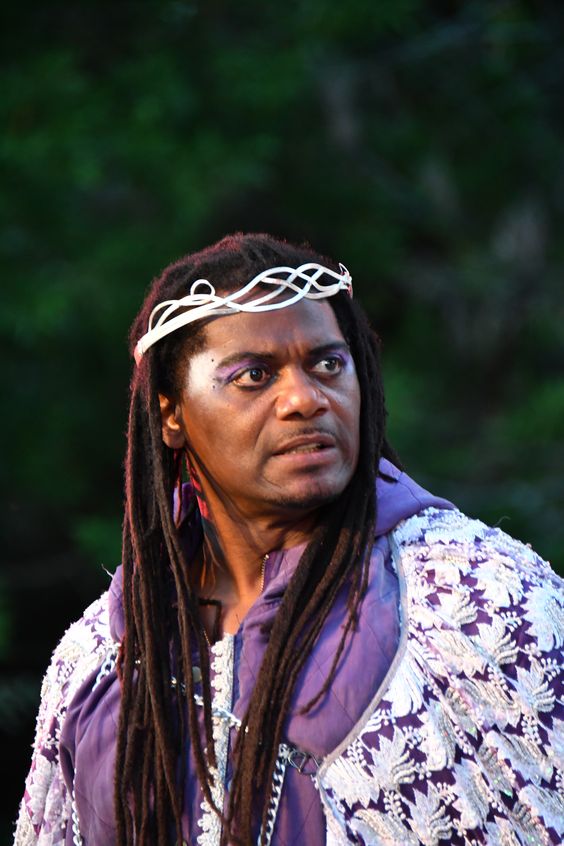
Dameion Brown playing Pericles. All photos by Jay Yamada, courtesy of Marin Shakespeare.
Darkest before the Dawn
Pericles is one of the late plays, collectively labeled the Romances, which are generically tragi-comedies. (The others are The Tempest, The Winter’s Tale and Cymbeline.) These plays veer into the darkest of tragic places including the dissolution of the protagonist’s sanity and the apparent deaths of all he holds dear before reversing course and miraculously ending happily. If you get the tone wrong, they can seem manipulative and melodramatic, but if you get it right – and Marin Shakes gets it exactly right – they are indescribably moving. Currier finds the perfect balance of humor, sentiment and mythos to unleash the play’s power.
The play is too stuffed with incident to even attempt a plot summary, but this abundance of adventure, misfortune and eventual resolution is part of what makes it so alluring in the theatre. The action barely takes time to pause as Pericles’ epic journey races from one incident to the next, over decades and continents.
Double, Double…
The production uses a speaking ensemble of 10, many doubling and tripling roles in virtuosic turns. There is a not a weak link to be found, but Kathryn Smith-McGlynn is especially radiant as Thaisa and brilliantly hysterical as her polar opposite, the Bawd.

Kathryn Smith-McGlynn as the Bawd
Elena Wright perfectly sets the tone of the night as a petulant daughter to Antiochus, and is later stunningly commanding as the doctor, Cerimon.
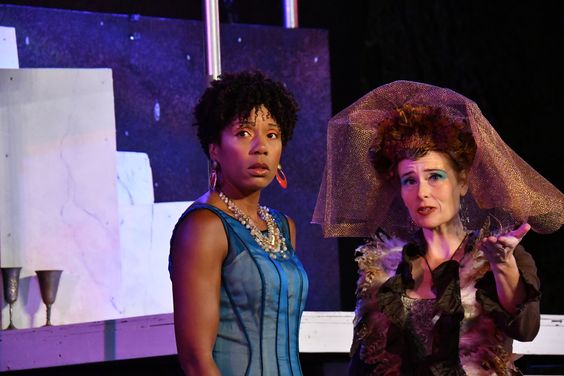
Smith-McGlynn as Thaisa and Elena Wright as Cerimon
It is hard to image any actor finding greater range in roles than the exceptional Rod Gnapp does with the heroic and noble retainer Helicanus contrasted with the relentlessly randy jack-of-all-trades in the brothel, Boult.
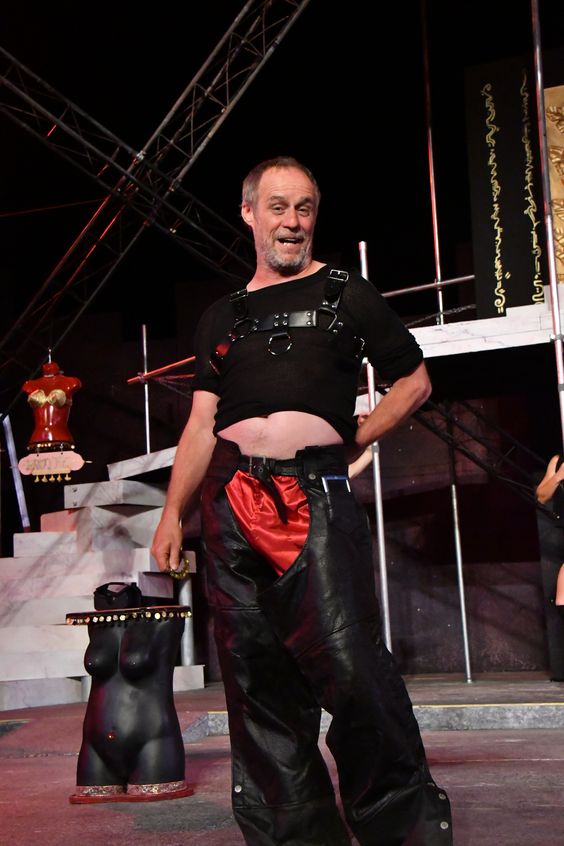
Rod Gnapp as Boult
The entire production is moved briskly along by Diane Wasnak in the role of the narrator, Gower. This is a difficult, and often thankless, role, but she handled it with such clarity and precision that I looked forward to her every appearance.
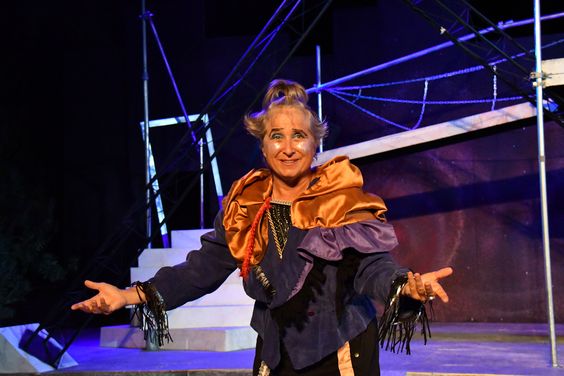
Diane Wasnak as Gower
At the heart of the production is the relationship between Pericles and the daughter he gave up in infancy and believes to have died in her teens before they could be reunited. The daughter, Marina, is beautifully played by Eliza Boivin. Brown is powerfully emotional all night long, but at his best in the extraordinary scene he shares with her near the end of the play.
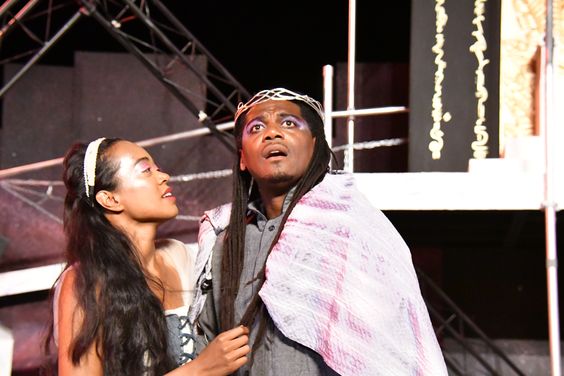
Eliza Boivin as Marina with Dameion Brown as Pericles.
Brown is a phenomenon all his own. A former inmate at Salano State Prison, he was discovered and trained by director Currier in their Shakespeare-in-prisons program. Upon his release, he made his professional debut as Othello for Marin Shakespeare, winning a number of best actor awards in the Bay Area. Knowing this history, it is hard not to see the emotional depth in his performance as a man who believes he has lost everything only to find redemption and second chances after decades of misfortune. If you love Shakespeare, you’d be crazy to miss this performance, even if it had no other virtues than the realization of this beautiful scene. Of course, it does have other virtues, and lots of them!
This company is not spectacle oriented but Jackson Currier’s set design is suggestive of the cosmic scale of the epic play. Merissa Mann, the costume designer, has the unenviable task of costuming this play that requires literally hundreds of costumes. Those most central to the production are wonderfully executed but, unfortunately, in the production’s only real downside, many of the costumes for minor characters and extras seem chosen for their ability to be changed quickly and neither look good nor fit. Joel Eis’ props, by contrast are comically perfect.
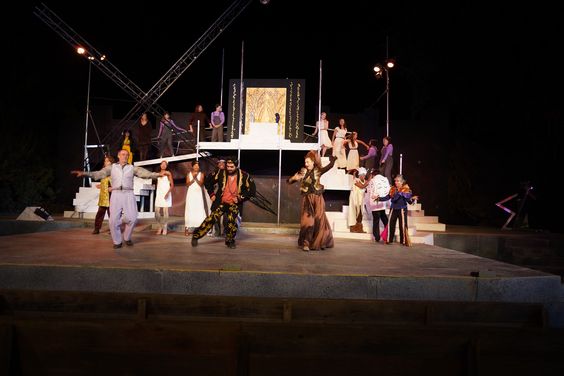
The cast on Jackson Currier’s set.
More Information
Pericles – July 14 – August 5, 2018, By William Shakespeare / Directed by Lesley Schisgall Currier
Forest Meadows Amphitheatre at Dominican University of California, 890 Belle Avenue, San Rafael, CA 94901
Performances at 8 pm Thursdays, Fridays, Saturdays and Sundays; and 4 pm Sundays. See website (www.marinshakespeare.org) for specific repertory performance schedule.
Phone: 415-499-4488